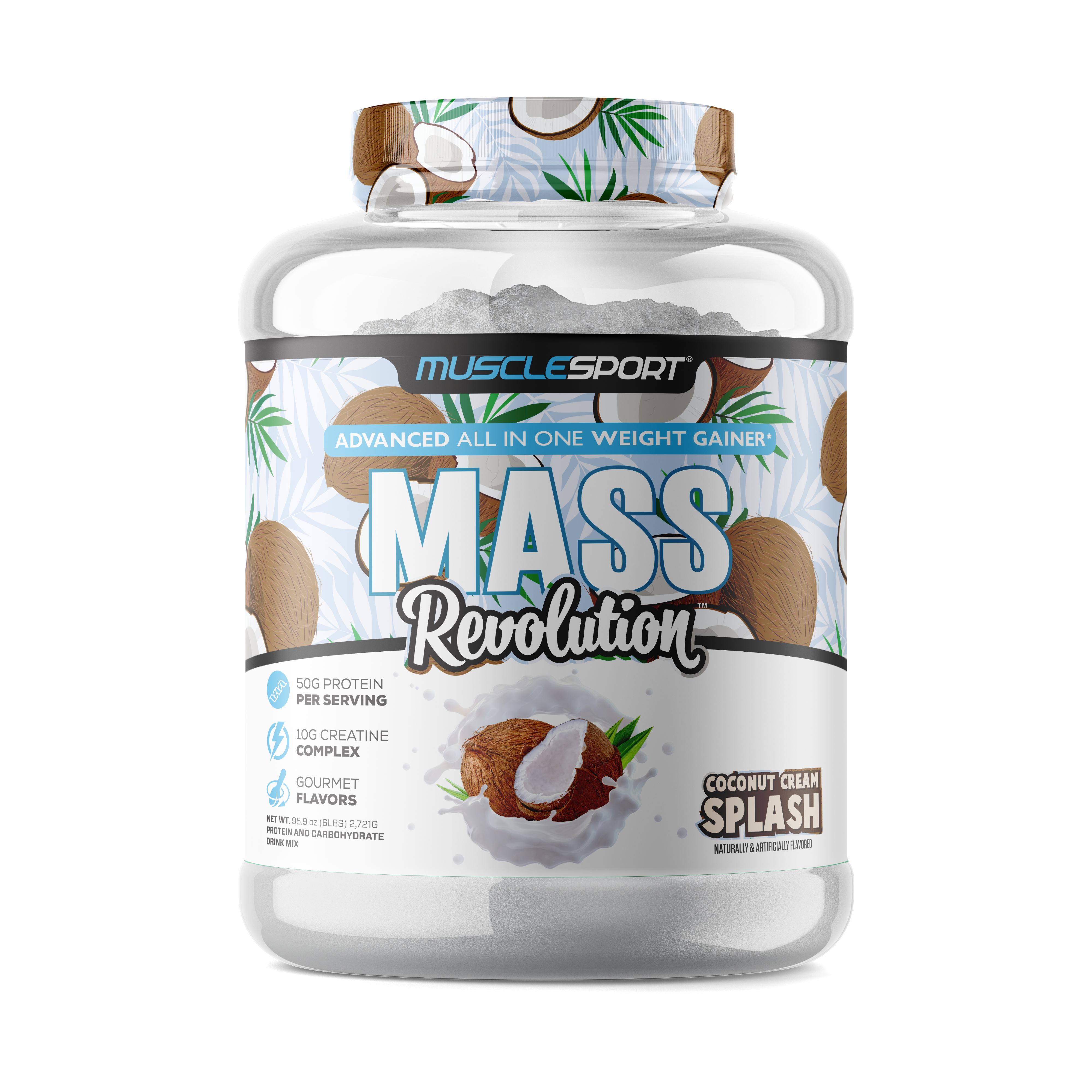
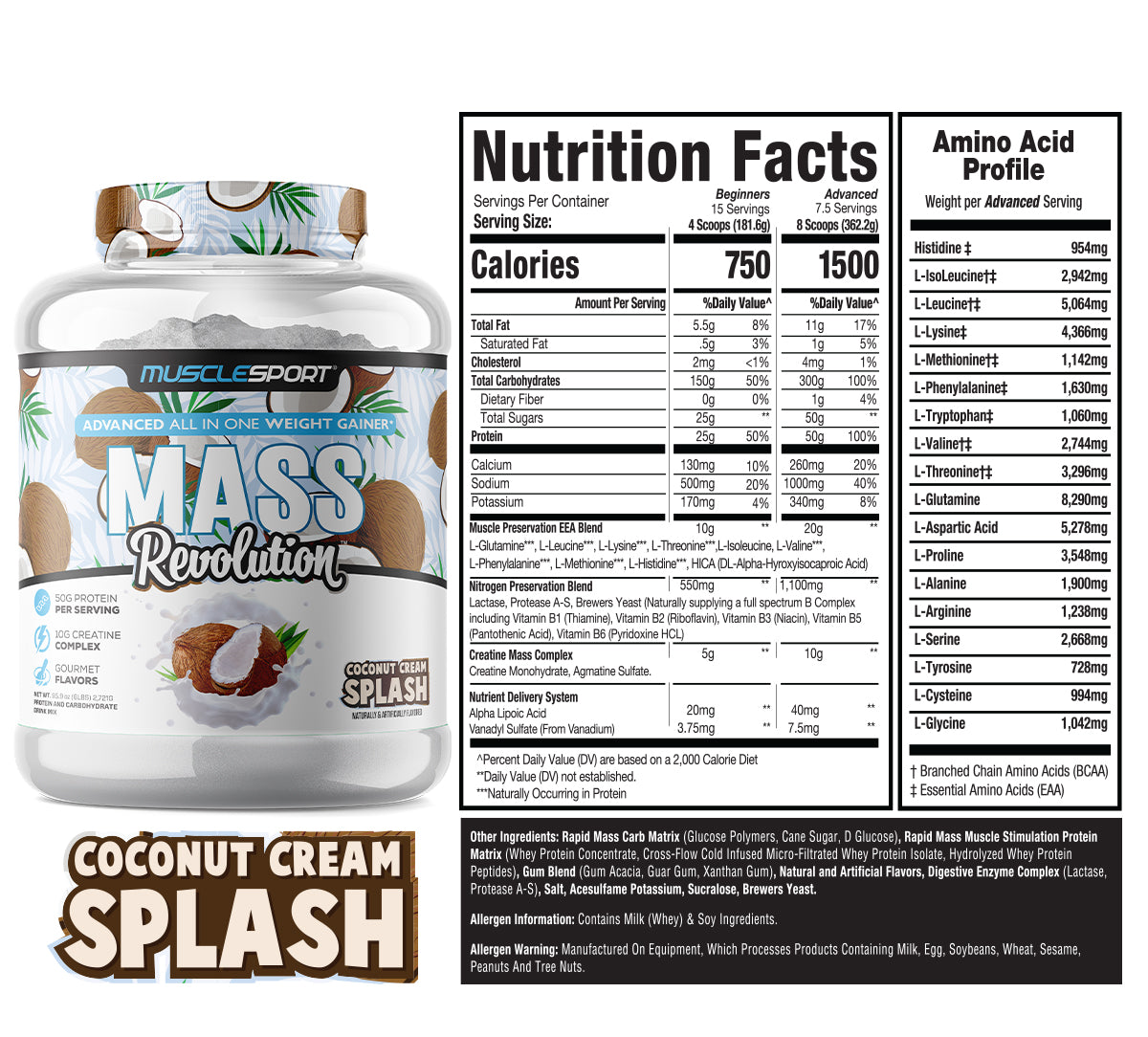

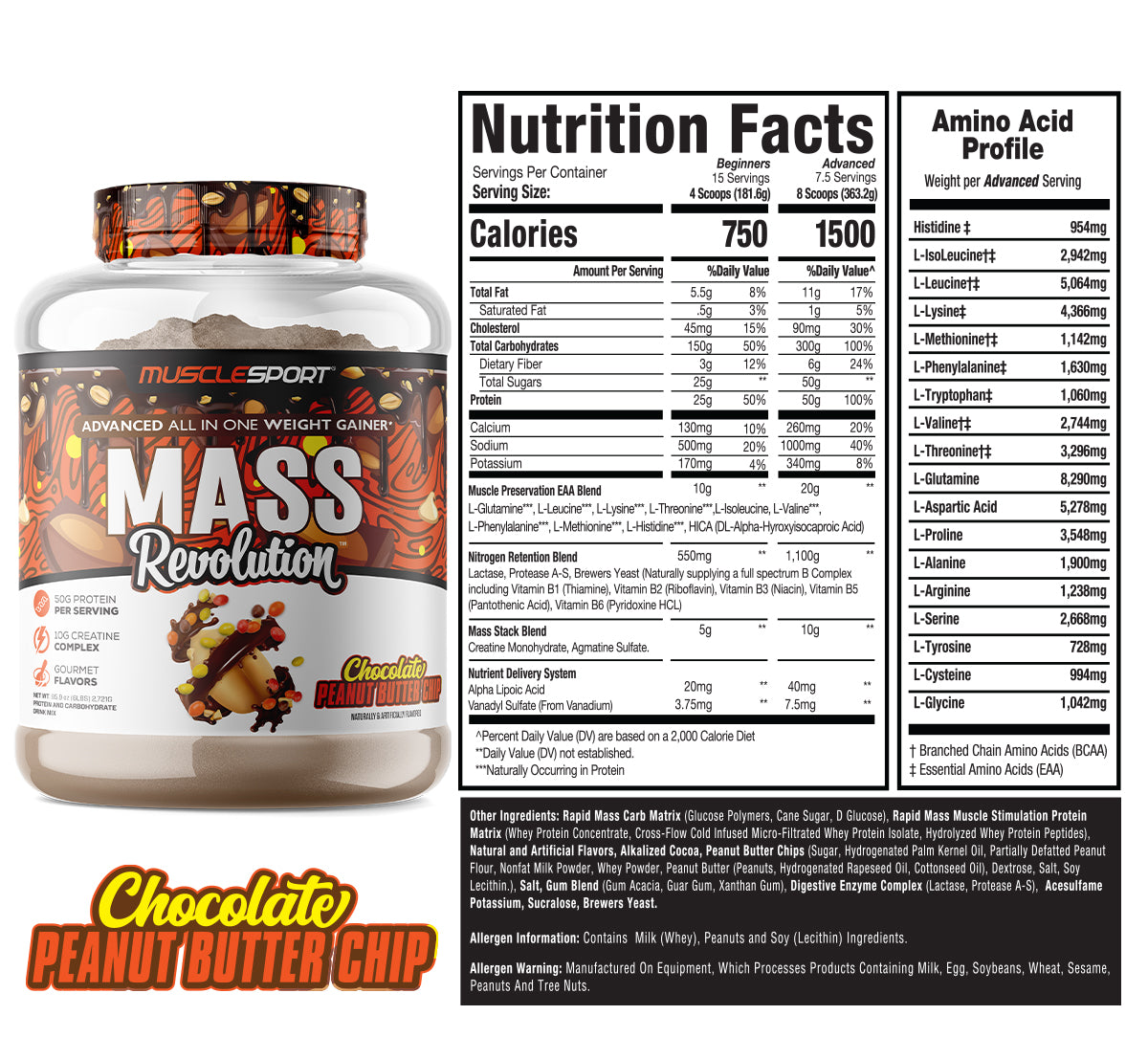

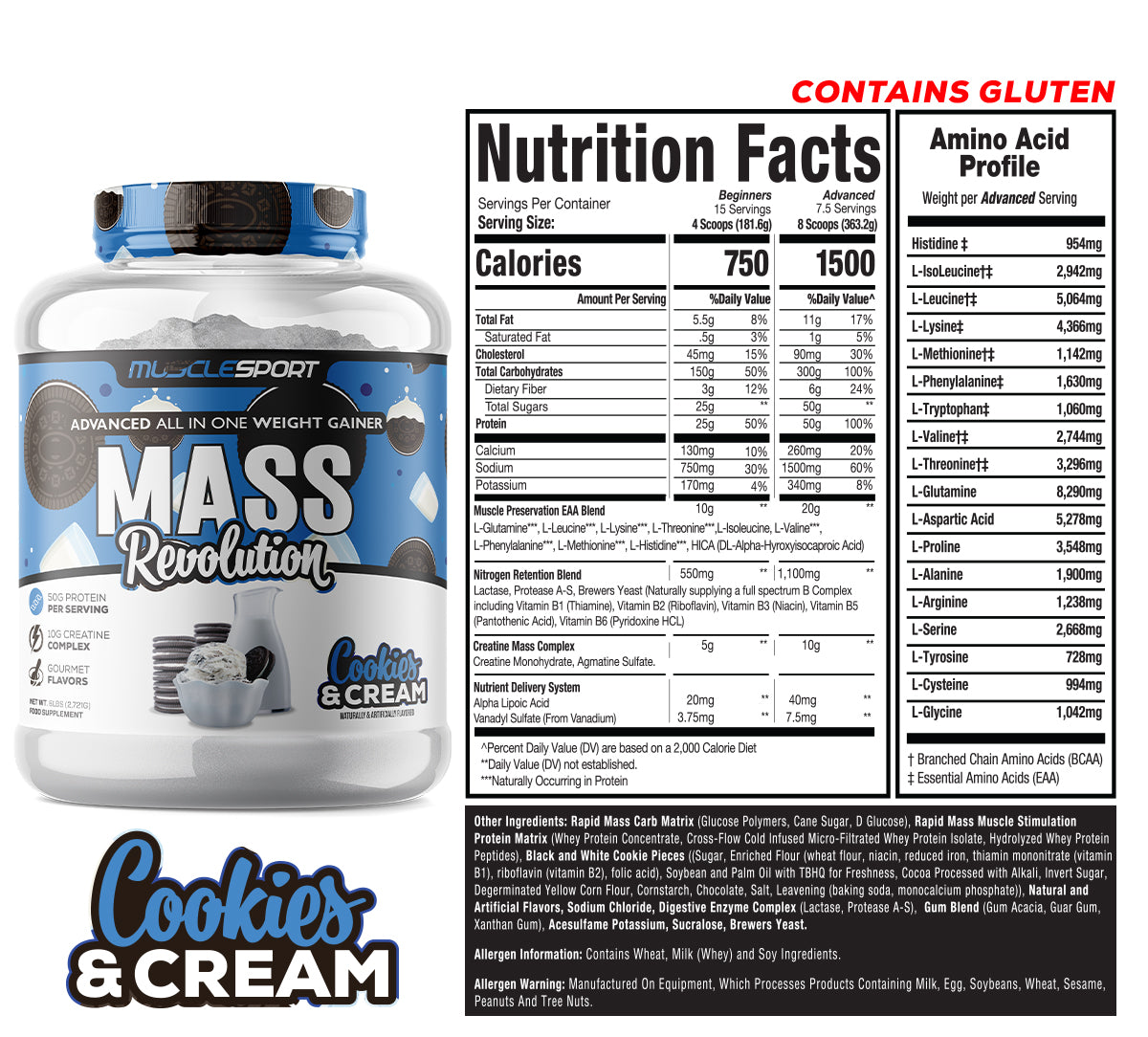
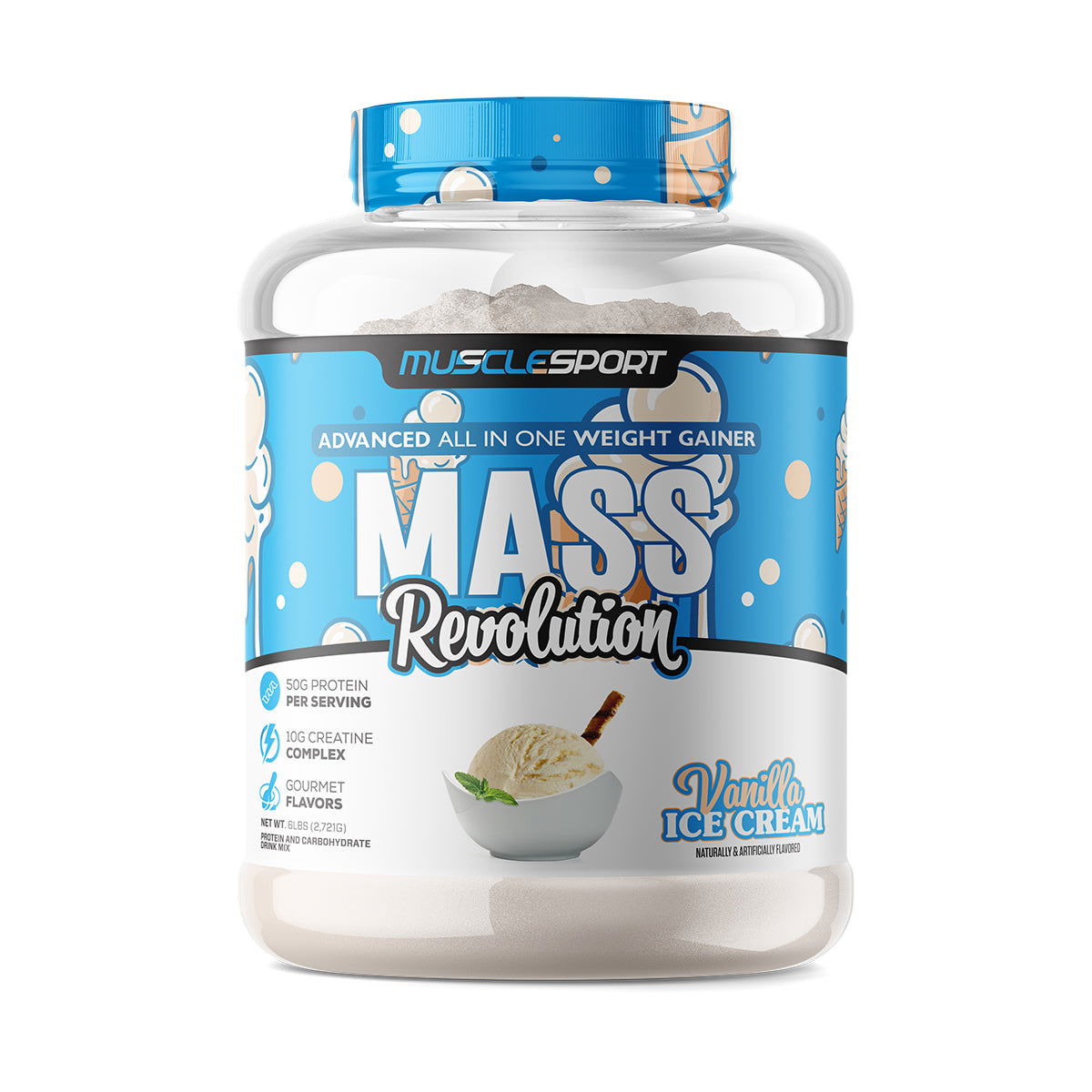


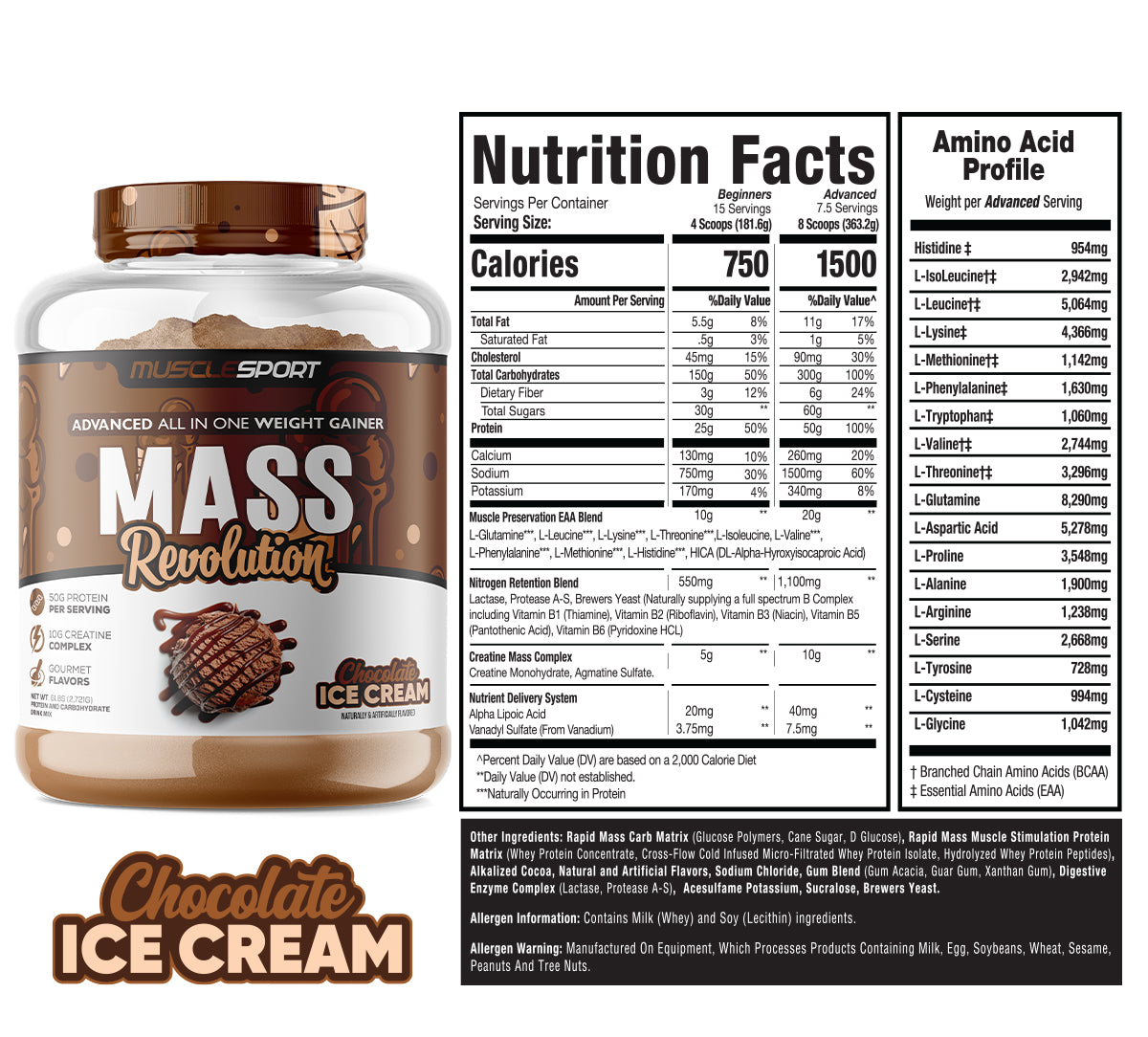
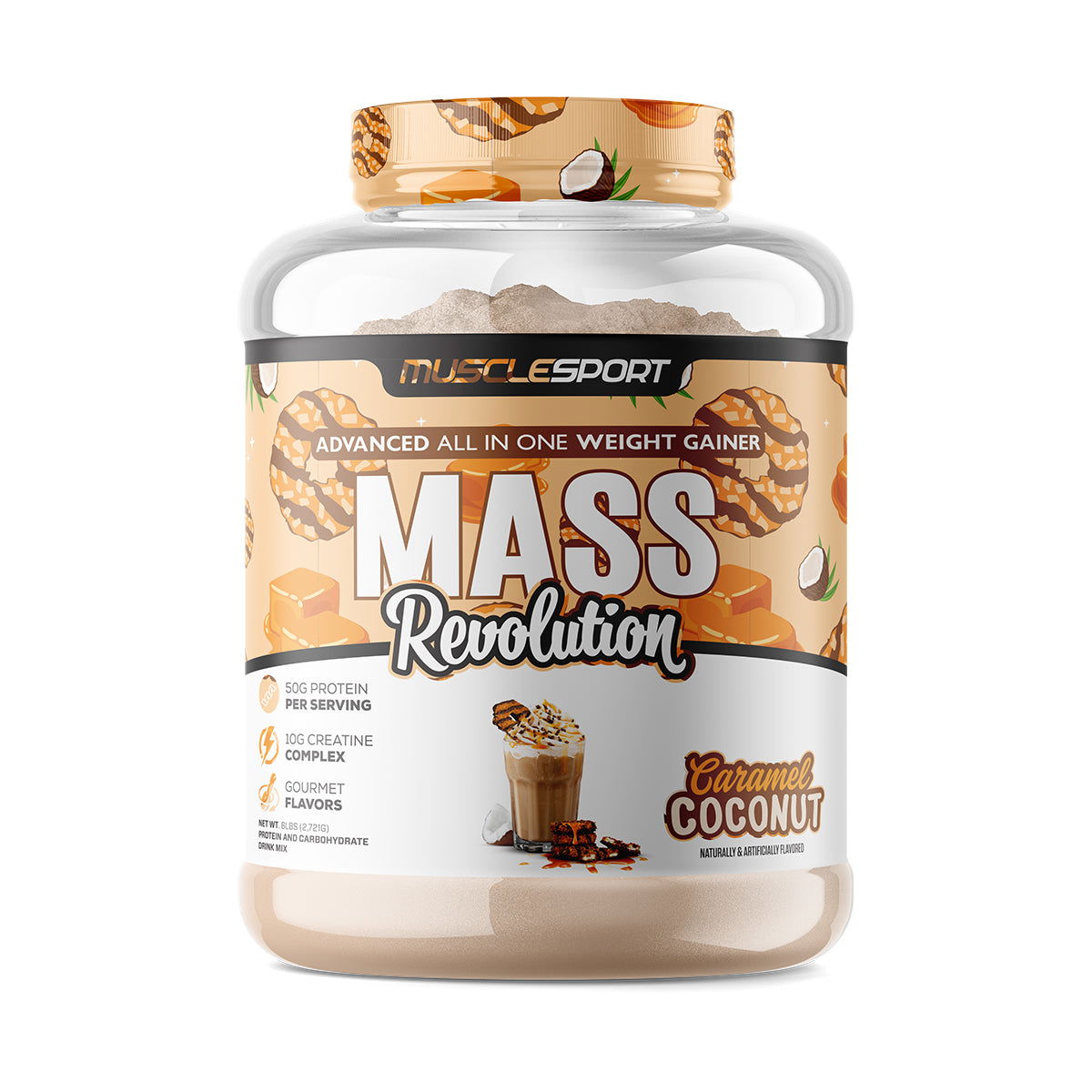

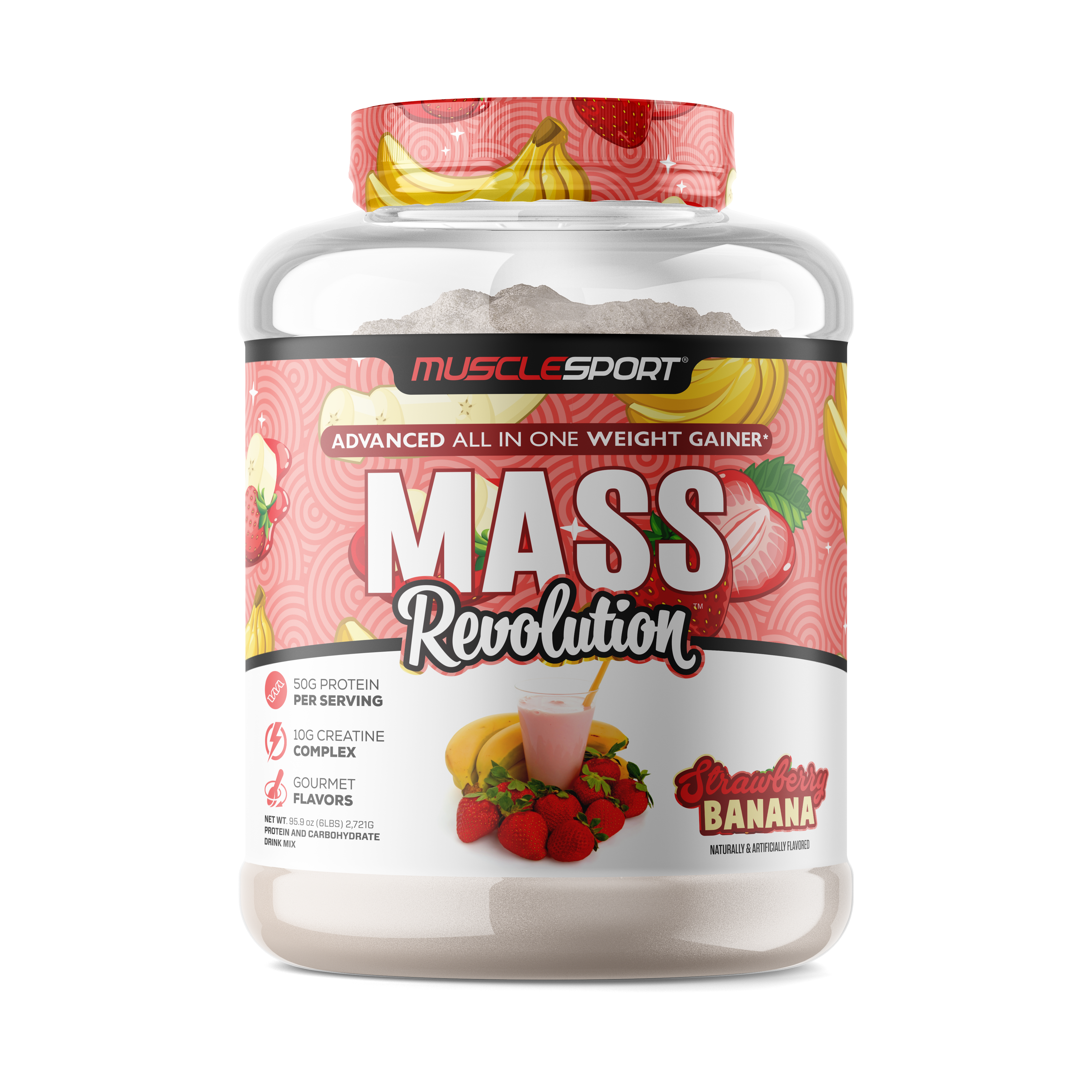

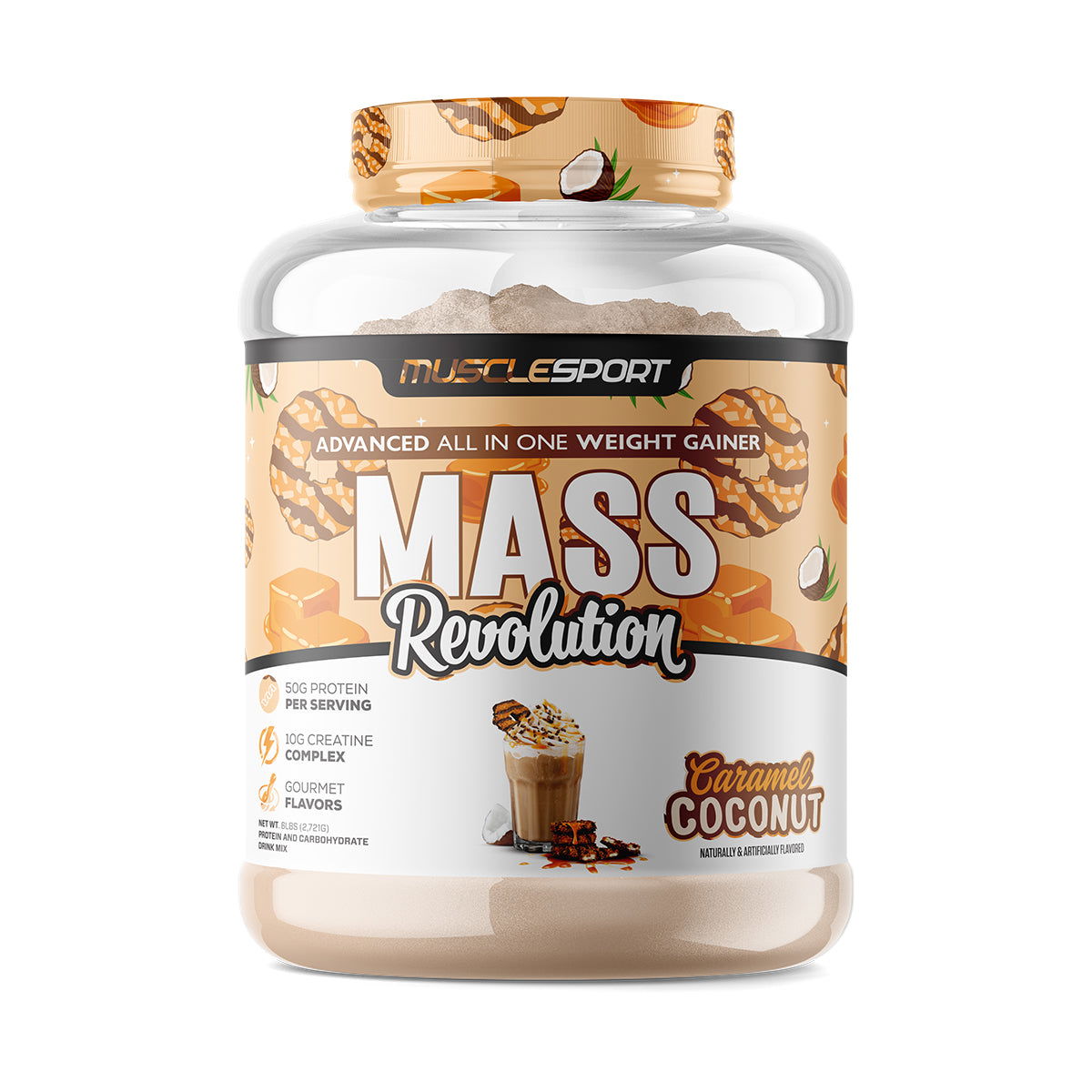
Mass Revolution™ Mass Gainer 6lb
Popular upgrades

Mass Revolution™ Mass Gainer 6lb
OVERVIEW
Advanced All-in-One Weight Gainer
Fuel your body with 150g of clean carbs, 25g of ultra-premium protein, and just 6g of fats per serving. This 5-hour time-release muscle feeder boasts a 6:1 carb-to-protein ratio, featuring four high-leucine proteins for rapid amino acid delivery. Enhanced with key enzymes for optimal digestion and absorption, it’s designed to maximize uptake without stomach discomfort—all in irresistible flavors!

